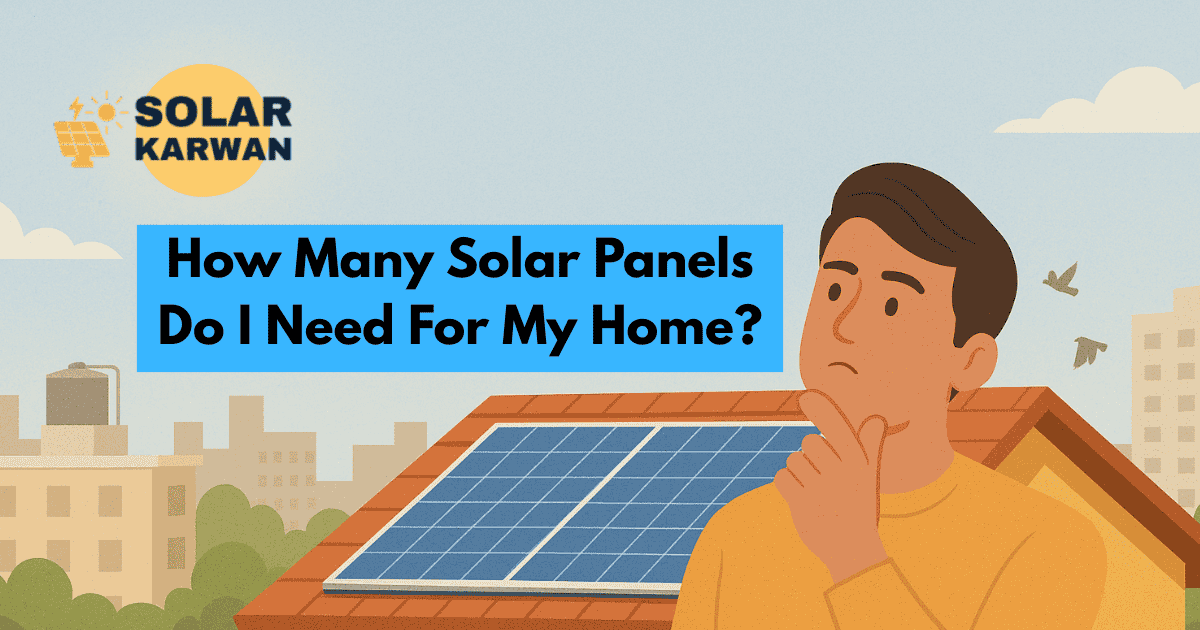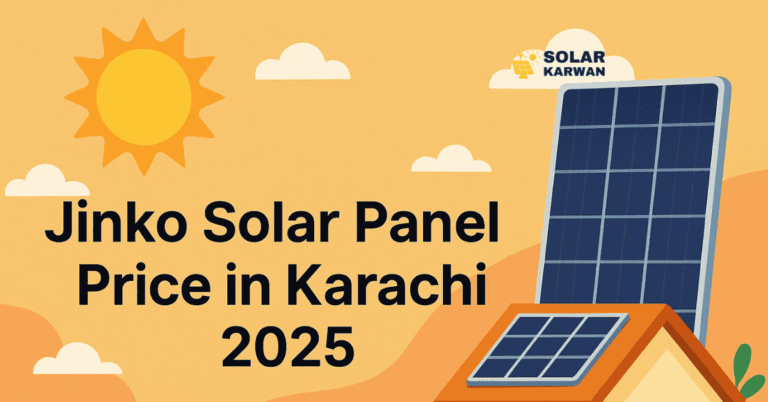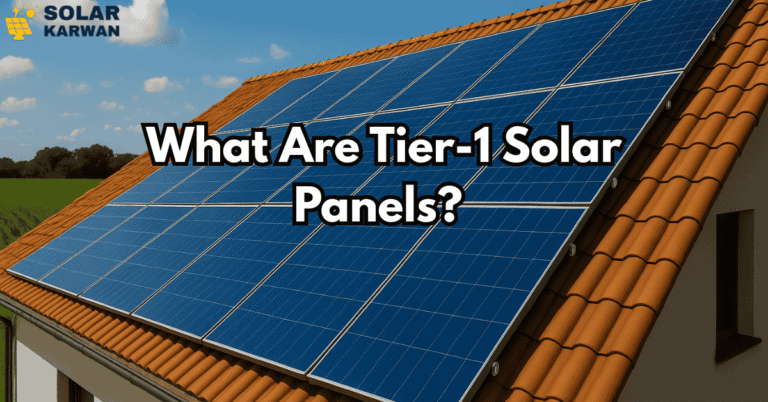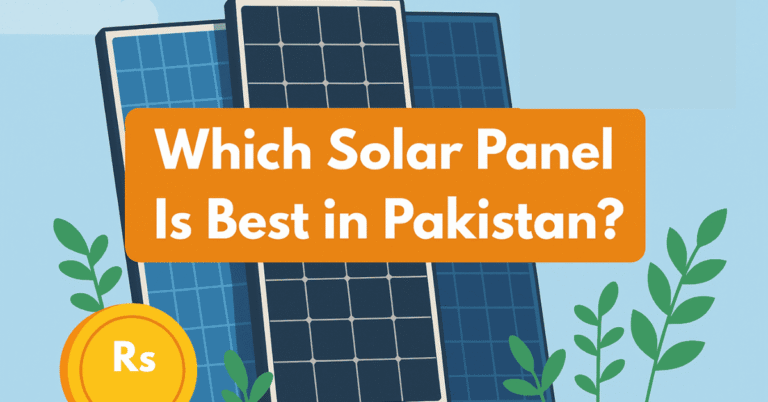How many solar panels does a home in Karachi really need?
This is the first question most families ask before considering a switch to solar.
However, the answer depends on your monthly KE bill, your roof space, and the type of system you install.
In this straightforward guide, we will demonstrate how to estimate the number of panels, illustrate the process with real-life Karachi examples, and provide clear steps to size your solar system accurately.
- Factors That Decide the Number of Solar Panels
- Monthly KE Bill → System Size → Panels Needed
- Rooftop Space Needed for Solar Panels
- Example: KE Bill vs Solar Setup
- Panel Efficiency in Karachi Weather
- Extra Costs to Consider
- ✅ Conclusion: Find the Right Number of Solar Panels for Your Home
- Frequently Asked Questions
Factors That Decide the Number of Solar Panels
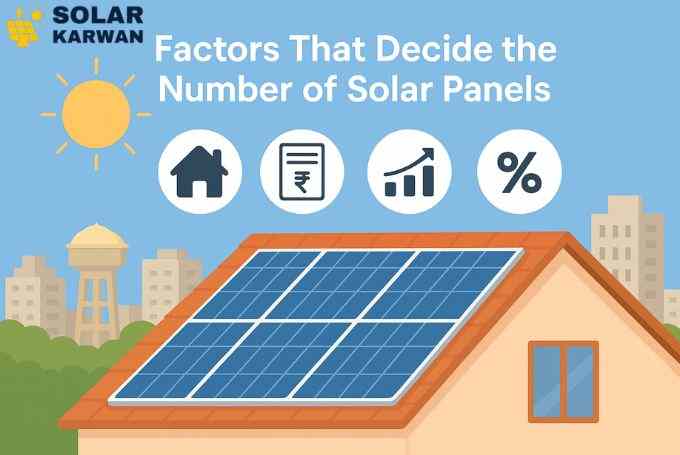
Several factors affect the number of panels your home will need.
Let’s go through them step by step.
- Monthly KE Bill → The higher your electricity bill, the bigger your system size.
- System Type → On-grid, hybrid, or off-grid setups require different numbers of panels.
- Panel Wattage → Most homes in Karachi use 550W panels, but some use smaller 450W ones.
- Roof Space → More panels mean more roof area. Shading from water tanks or walls can also reduce output.
- Sunlight Hours → Karachi gets about 5–6 hours of full sunlight daily, which is very good for solar.
👉 Together, these factors decide if you need 6 panels, 10 panels, or even 20 panels for your home.
Monthly KE Bill → System Size → Panels Needed
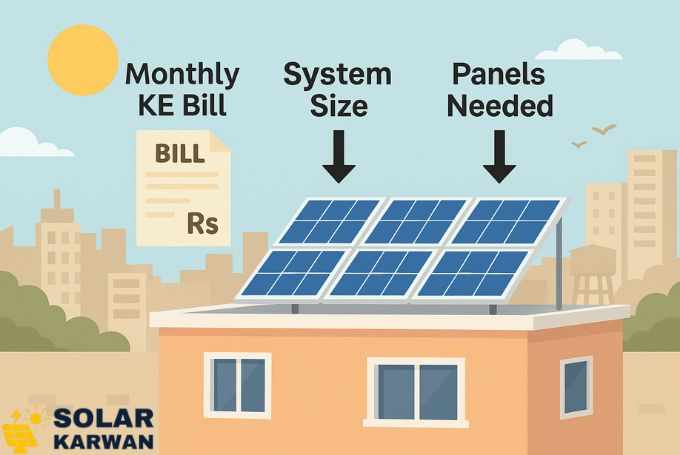
Before choosing solar, first check your average electric bill. This provides a strong indication of the system size your home requires.
Here’s a simple breakdown for Karachi families:
| Monthly KE Bill | System Size | Approx. Panels (550W) |
|---|---|---|
| Rs 15,000 | 3kW | 6 Panels |
| Rs 25,000 | 5kW | 10 Panels |
| Rs 35,000 | 7.5 kW | 14 Panels |
| Rs 50,000 | 10 kW | 19 Panels |
| Rs 60,000 | 12 kW | 22 Panels |
| Rs 75,000 | 15 kW | 28 Panels |
| Rs. 100,000 | 20 kW | 37 Panels |
| Rs. 125,000+ | 25 kW | 46 Panels |
👉 As you can see, the higher your monthly bill, the larger the system and the more panels you’ll need.
Moreover, this is why a quick KE bill check is the easiest way to estimate your solar size.
Rooftop Space Needed for Solar Panels
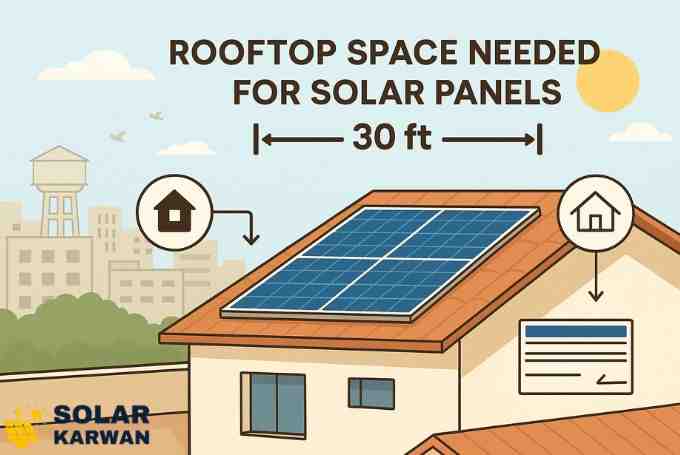
Once you know your system size, the next big question is: “Do I have enough roof space?”
On average, each 550W panel needs 30–35 sq ft of space, including gaps for airflow.
Here’s how much space you’ll need for different setups:
| Panels | Approx. Roof Area (sq ft) |
|---|---|
| 6 | 180–210 |
| 10 | 300–350 |
| 14 | 420–490 |
| 19 | 570–665 |
| 22 | 660–770 |
| 28 | 840–980 |
| 37 | 1,110–1,295 |
| 46 | 1,380–1,610 |
👉 This means even a medium house roof can easily fit a 5kW to 10kW system.
For larger systems like 20kW or 25kW, you’ll need a spacious rooftop without shade from water tanks or walls.
Example: KE Bill vs Solar Setup
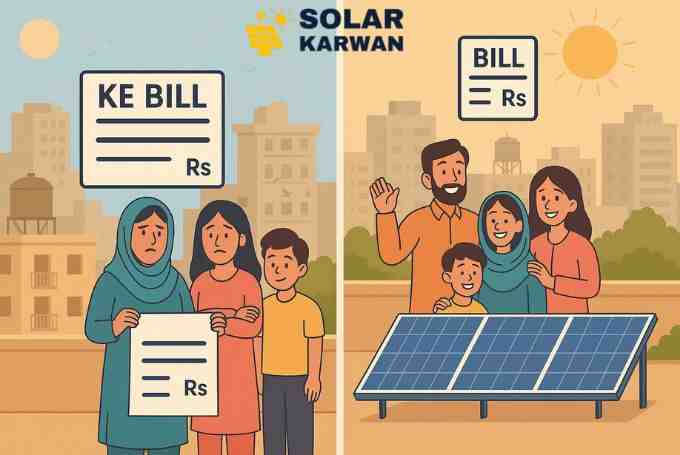
To make this even clearer, let’s look at a real-life situation.
Imagine a Karachi family with a Rs. 25,000 monthly KE bill. On average, such a home would require a 5kW solar system, which usually means 10 panels of 550W each.
Once the system is installed and net metering is activated, their electricity bill can drop from Rs. 25,000 to only Rs. 2,000 per month.
This is because their solar system produces enough electricity during the day, and the extra units are sold back to KE.
👉 This example shows how solar is not only about the number of panels but also about the big financial change it creates.
Panel Efficiency in Karachi Weather
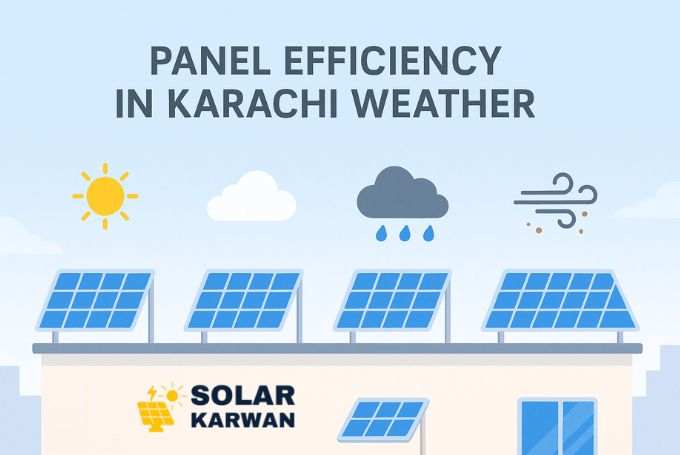
Karachi has one of the best climates in Pakistan for solar.
Here’s what you need to know about panel efficiency in this city:
- Sunny climate advantage → Karachi gets over 300 sunny days a year, which means your panels perform well most of the time.
- Cloudy days still work → Even on foggy or hazy days, panels continue to generate electricity, just at a slightly reduced output.
- Heat factor → High summer heat can lower efficiency a little, but modern panels are built to handle it.
- Dust and humidity → Regular cleaning is important because dust and salty air can block sunlight if left unchecked.
- Tier 1 panels perform better → Brands like LONGi, Jinko, and Canadian Solar are designed to withstand Karachi’s tough weather conditions.
- Efficiency means fewer panels → High-efficiency panels can reduce the total number of panels needed for your system. For example, 18 high-quality panels may produce the same electricity as 20 cheaper ones.
👉 In short, Karachi’s weather is ideal for solar, and with the right panels, you can get strong output all year round.
Read: Monocrystalline vs Polycrystalline Solar Panels: Which is Better for Karachi?
Extra Costs to Consider
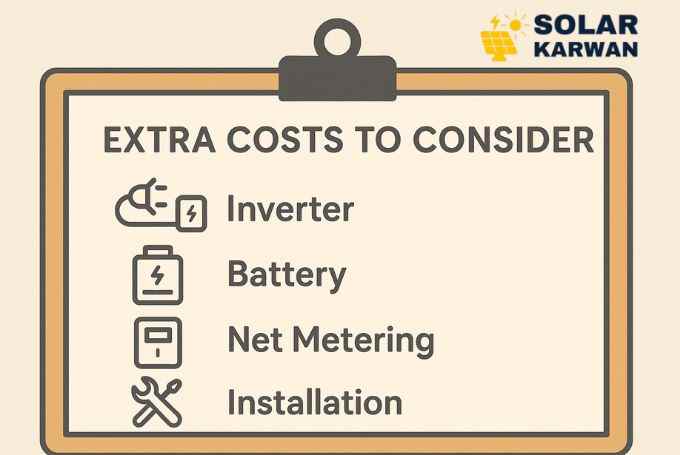
While the panel count provides the initial estimate, other costs also impact your system’s success.
Let’s break them down:
- Inverter Size → Your inverter must match your system. A 5kW system needs a 5kW inverter. The inverter is the “brain” of your setup.
- Batteries → If you want backup during load-shedding, you’ll need batteries. They add cost but give peace of mind when KE goes off.
- Net Metering Charges → KE approval and connection fees are a one-time expense. This is what allows you to sell extra units back to the grid.
- Installation Costs → This includes the labor, mounting structure, and wiring required to set up the panels on your roof.
👉 Together, these extra costs make sure your solar system works smoothly for years.
Moreover, you have to think of them as the supporting parts that help your panels perform at their best.
Read: Best Affordable Solar Inverter Under PKR 200,000 in Karachi
✅ Conclusion: Find the Right Number of Solar Panels for Your Home

By now, you know the answer to the big question: the number of solar panels your Karachi home needs depends on your KE bill, roof space, and the type of system you choose.
👉 But here’s the good news: you don’t have to calculate this alone.
At Solar Karwan, we keep it simple. We look at your bill, check your roof, and create a system that suits your needs—no confusion and no hidden costs.
💬 Message us on WhatsApp today and get a free solar consultation for your home or business.
Start saving on your bills and say goodbye to load-shedding with Solar Karwan!
Frequently Asked Questions

1) How many solar panels are needed for a 5kW system in Karachi?
A 5kW system usually needs 10 panels of 550W each. This setup is ideal for families with KE bills around Rs. 25,000–30,000.
2) How much space do I need on my roof for solar panels?
On average, each panel needs about 30–35 sq ft. A 10-panel (5kW) system will need around 300–350 sq ft of clear rooftop space.
3) Do solar panels work during cloudy days in Karachi?
Yes, panels still produce power even on cloudy or hazy days, though at reduced output. Karachi’s mostly sunny weather makes solar very reliable.
4) Can solar panels completely remove my KE bill?
If your system is sized correctly and you have net metering, your KE bill can go down to just Rs. 1,000–2,000 per month, mainly as fixed service charges.
5) Do I need batteries for my solar system?
Batteries are optional. An on-grid system saves you money but shuts down during load-shedding. A hybrid system with batteries costs more but gives backup power.

